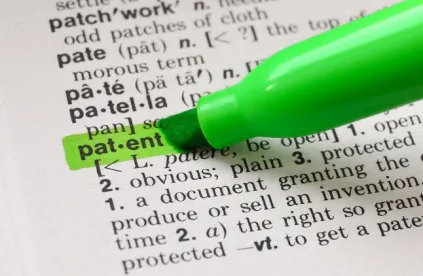In Natural Alternatives Intl. Inc. v. Iancu, the Federal Circuit affirmed the decision of the USPTO Patent Trial and Appeal Board (PTAB) that the patent at issue was not entitled to its earliest claimed priority date because NAI had deleted priority claims in a parent application that broke the priority chain. This decision highlights that a priority claim chain must be continuous and remain unbroken in order for a priority claim to be valid.
The Priority Claim At Issue
The priority claim at issue was made in NAI’s U.S. Patent 8,067,381, which issued from the eighth application in the priority chain shown below.

In 2011, NAI asserted the ‘381 patent against Woodbolt Distributors, LLC, which then requested inter partes reexamination on grounds that included the earliest parent patent (U.S. Patent 5,965,596) as prior art. Woodbolt asserted, and the Patent Office agreed, that the ‘596 patent could be cited against the ‘381 patent because of a defect in the priority chain. In particular, although the priority claim was correctly made in the ‘381 patent, NAI had amended the original priority claim in the fifth application to only claim priority to the 2003 provisional application. Thus, after this amendment, the fifth application no longer contained a “specific reference” to the earlier applications (which included the ‘596 patent) as required by 35 USC § 120.
The Board Decision
In its appeal to the Board, NAI argued that because the sixth application was filed before the priority claims were deleted in the fifth application, those priority claims “vested” as to the sixth and subsequent applications. The Board disagreed, finding instead that by voluntarily deleting the earlier priority claims in the fifth application, NAI had waived priority to the earlier applications. Therefore, all applications claiming priority through the fifth application were not entitled to the benefit of the earlier applications.
NAI appealed the Board decision. Woodbolt was not a party to the appeal, but the Director of the USPTO intervened to defend the Board’s decision.
The Federal Circuit Decision
The Federal Circuit decision was authored by Judge Prost and joined by Judges Moore and Reyna.
The Federal Circuit decision addresses four arguments NAI raised on appeal:
- priority to the earlier applications “vested” when a priority claim meeting all criteria of § 120 was made in the sixth application
- waiver of priority is limited to the application in which priority is not claimed
- priority not “a single growing chain” but “multiple fixed chains”
- that the Board’s decision “limits an applicant’s ability to seek protection” when “amending [a] priority claim to gain [patent] term.”
On the first argument, the Federal Circuit found that “NAI’s ‘vesting’ argument conflates properly claiming priority and demonstrating entitlement to priority.” The court focused on practical matters, noting that a priority claim may not be challenged until a court proceeding, that a court “may place the burden on the patent owner to come forward with evidence to prove entitlement … to an earlier filing date, and that “examiners and adjudicators cannot be expected to scrutinize the prosecution history of an application and each parent application to determine whether the application would have met § 120’s requirements at any point during its pendency.”
(In a parallel non-precedential decision, the Federal Circuit upheld the Board decision that the priority claim in U.S. Patent 8,129,422–the seventh application–to be defective for similar reasons, even though the ‘422 patent was filed before the priority claims were deleted in the fifth application.)
On the second argument, the Federal Circuit noted that NAI relied on a specific phrase in the MPEP, reminded that the MPEP does not have the force of law, and found that the MPEP did not support NAI’s position in any event.
On the third argument, the Federal Circuit cited “the long-standing interpretation of priority as a single chain, growing with each additional continuation,” citing the Supreme Court decision in Godfrey v. Eames, 68 U.S. 317, 326 (1863), for the proposition that, under § 120, “parent and continuing applications are to be considered as parts of the same transaction, and both as constituting one continuous application, within the meaning of the law.”
On the fourth argument, the Federal Circuit noted “the trade-off between priority and patent term,” and explained that while it is “permissible” “to disclaim the benefit of earlier filing dates” in order to obtain a longer patent term, “NAI cannot have it both ways.” That is, NAI may not “gain patent term on its fifth application while simultaneously shielding its child applications (including the eighth application) from their former parents.”
The Fragility Of Priority Claims
This decision follows other Federal Circuit decisions highlighting the care that must be taken with making–and preserving–priority claims, especially in long or complex patent families.





 />i
/>i

